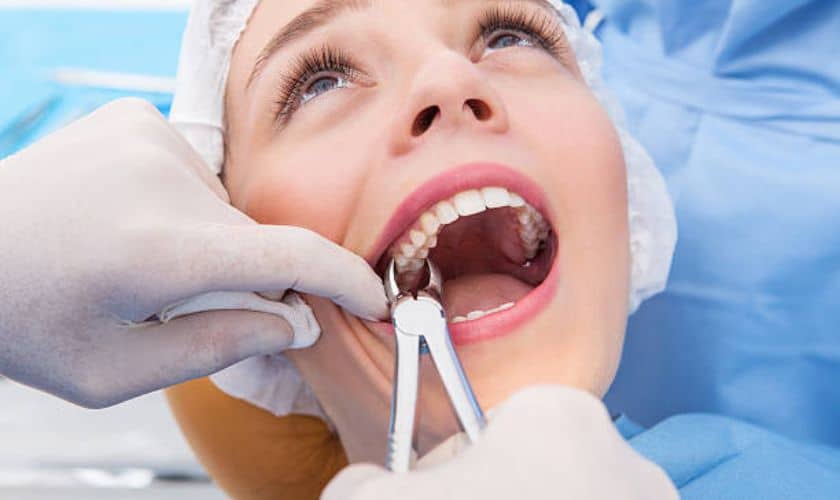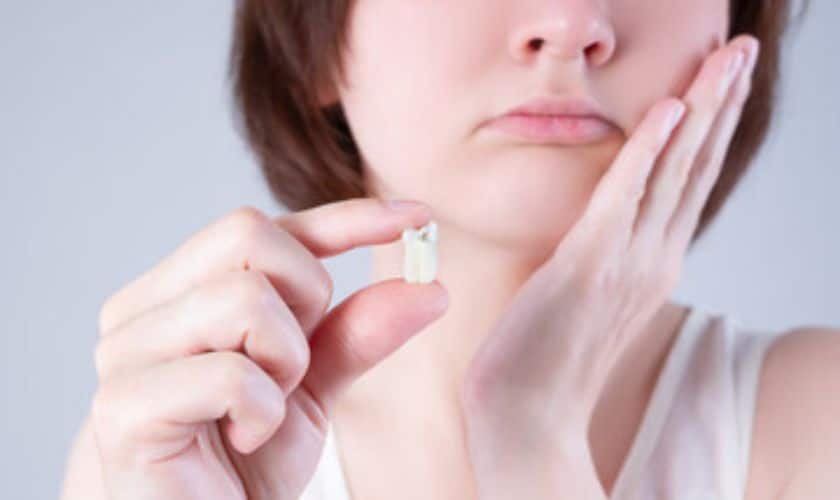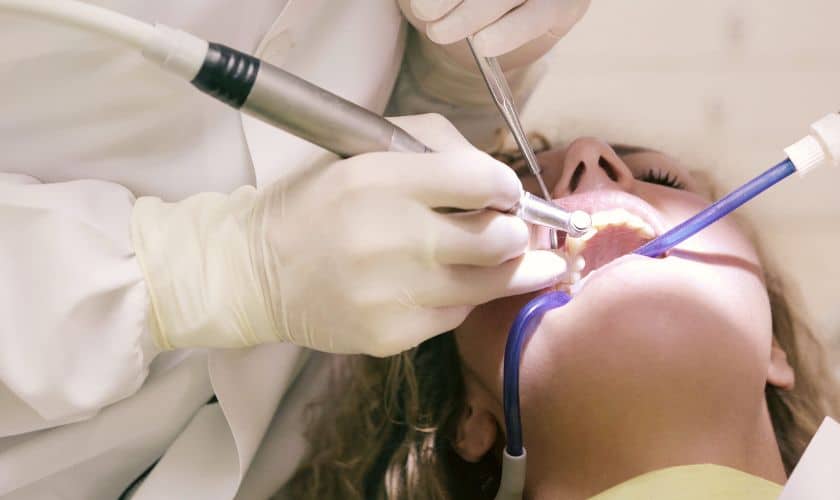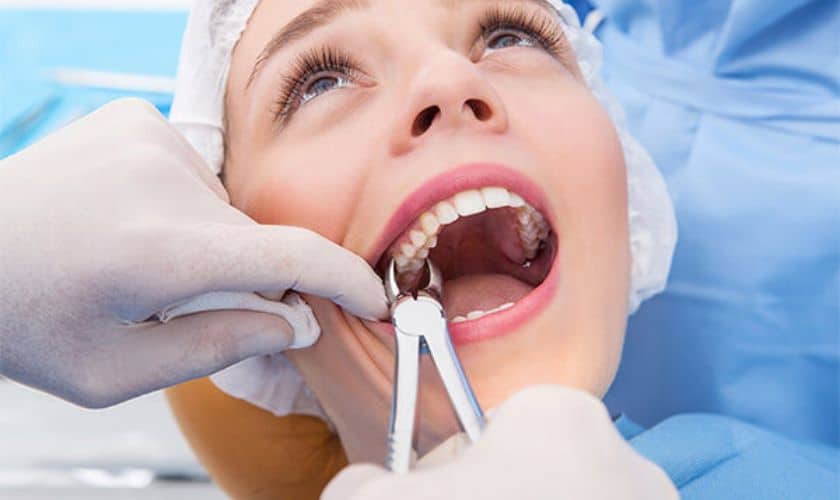
Welcome to the world of tooth extraction, where the gateway to a brighter smile is unveiled. Tooth extraction is a dental procedure that involves the removal of a tooth from its socket in the jawbone. While the thought of tooth extraction may sound intimidating, it serves as a gateway to improved oral health and a brighter smile. Whether it’s due to severe decay, irreparable damage, overcrowding, or orthodontic treatment requirements, tooth extraction can provide relief from pain, prevent further complications, and create space for necessary dental procedures. Let’s explore the transformative power of tooth extraction and the path it paves towards a healthier and more confident smile.
Tooth Extraction: Overview
Tooth extraction is a dental procedure that involves the removal of a tooth from its socket in the jawbone. It is typically performed when a tooth is severely decayed, damaged beyond repair, impacted, or causing overcrowding. The extraction process begins with the administration of local anesthesia to ensure a painless procedure. The dentist then carefully loosens and removes the tooth using specialized tools. After the extraction, the area is typically covered with a gauze pad to control bleeding, and post-operative instructions are provided. Tooth extraction is a common and safe procedure that can alleviate pain, prevent further dental issues, and pave the way for necessary dental treatments or orthodontic procedures.
Source : American Dental Association (ADA)
Reasons For Tooth Extraction
1. Severe Tooth Decay: When a tooth is severely decayed, and the damage is beyond repair, tooth extraction may be necessary to prevent the spread of infection and protect the surrounding teeth.
2. Impacted Wisdom Teeth: Wisdom teeth, also known as third molars, often become impacted (unable to fully emerge). Impacted wisdom teeth can cause pain, infection, and potential damage to adjacent teeth, making extraction necessary.
3. Overcrowding: In cases of severe dental crowding, tooth extraction may be recommended as part of orthodontic treatment. Removing a tooth creates space for the remaining teeth to align properly, improving overall dental alignment and bite.
4. Irreparable Tooth Damage: Teeth that are severely fractured, broken, or traumatized beyond repair may require extraction. Removing the damaged tooth allows for appropriate restoration options, such as dental implants or bridges, to replace the missing tooth.
5. Periodontal Disease: Advanced periodontal (gum) disease can cause loosening and loss of teeth. In cases where the disease has progressed extensively and tooth support is compromised, extraction may be necessary to maintain oral health and prevent further complications.
It is essential to consult with a dental professional to assess the specific situation and determine the need for tooth extraction.
Tooth Extraction: Process
The process of tooth extraction typically involves the following steps:
1. Evaluation and Anesthesia: Before the extraction, the dentist will evaluate the tooth and take X-rays to determine the best approach. Local anesthesia is administered to numb the area around the tooth, ensuring a painless procedure. In some cases, conscious sedation or general anesthesia may be used for more complex extractions or for patients with dental anxiety.
2. Loosening and Removal: The dentist uses specialized dental instruments, such as elevators and forceps, to gently loosen the tooth from its socket. They carefully manipulate the tooth back and forth to widen the socket until the tooth can be lifted out.
3. Control of Bleeding: After the tooth is removed, the dentist places a gauze pad on the extraction site and asks you to bite down to facilitate blood clot formation and control bleeding. In some cases, dissolvable stitches may be used to close the extraction site.
4. Post-Extraction Care: The dentist provides instructions on post-extraction care, including how to manage any discomfort or swelling, proper oral hygiene practices, and what to eat or avoid during the healing process. Pain medications or antibiotics may be prescribed, depending on the situation.
5. Follow-Up Appointment: The dentist may schedule a follow-up appointment to monitor healing, remove any stitches if used, and assess the progress of the extraction site.
It’s important to follow all post-extraction instructions and attend follow-up appointments to ensure proper healing and minimize any potential complications.
Source: Dental Minute with Steven T. Cutbirth, DDS
Tooth Extraction: Post Operative Tips
1. Bite on Gauze: After the tooth extraction, bite down on the gauze pad placed by the dentist to promote blood clot formation and control bleeding. Change the gauze as instructed or if it becomes soaked.
2. Take Pain Medication as Directed: If prescribed, take pain medication as directed by your dentist to manage any discomfort or pain following the extraction. Over-the-counter pain relievers can also be used, following the recommended dosage.
3. Apply Ice Packs: To reduce swelling and discomfort, apply ice packs to the affected area for short intervals of 10-15 minutes at a time. Use a cloth or towel to protect your skin and avoid direct contact with the ice.
4. Avoid Straws and Rinsing: Avoid using straws, spitting forcefully, or rinsing your mouth vigorously for the first 24 hours after extraction. These actions can dislodge the blood clot and delay the healing process.
5. Maintain Oral Hygiene: Continue brushing your teeth gently but avoid the extraction site. Be cautious when flossing near the extraction area. Rinse your mouth with warm salt water a day after the extraction to promote healing and keep the area clean.
It’s important to follow all post-extraction instructions provided by your dentist and contact them if you experience severe or prolonged pain, excessive bleeding, or any other concerns during the healing process.
FAQs
1. Is tooth extraction painful?
During the this procedure, local anesthesia is administered to numb the area, ensuring a painless experience. However, you may feel pressure or slight discomfort during the process. After the extraction, there may be some soreness or discomfort, which can be managed with over-the-counter pain medications as prescribed by your dentist.
2. How long does it take to recover from a tooth extraction?
The recovery period varies depending on the complexity of the extraction and individual healing factors. Generally, it takes a few days to a week to recover fully. It is normal to experience some swelling and mild discomfort during this time. Following your dentist’s aftercare instructions, including proper oral hygiene and avoiding certain foods or activities, can help promote faster healing.
3. How to Prepare Your Child for a Tooth Extraction?
Preparing your child for a tooth extraction can alleviate anxiety and ensure a smoother experience. Start by explaining the procedure in a calm, reassuring manner, addressing any concerns they may have. Encourage them to ask questions and express their feelings. Reassure them that the dentist will keep them comfortable throughout the process. Avoid discussing any negative experiences or using scary language. Consider using books or videos designed for children to help them understand what to expect. Plan for special treats or activities afterward to reward their bravery. Finally, ensure they have a comforting item, such as a favorite toy or blanket, to bring along for added comfort during the procedure.
4. What can I eat after a tooth extraction?
It is recommended to stick to liquid or soft foods for the first few days following a tooth extraction. This includes items like soups, yogurt, smoothies, mashed potatoes, and scrambled eggs. Avoid hard, chewy, or spicy foods that may irritate the extraction site. Gradually reintroduce solid foods as you feel comfortable, but be cautious around the extraction area.
5.What Types of Drinks to Avoid After Tooth Extraction ?
You must need to know about What Types of Drinks to Avoid After Tooth Extraction. Avoid hot drinks like coffee or tea, alcohol, and carbonated beverages after tooth extraction to prevent irritation and complications. Stick to cold water or soft, non-acidic liquids for comfort and healing.
6. Will I need a dental replacement after a tooth extraction?
Depending on the location and function of the extracted tooth, your dentist may recommend a dental replacement option to restore your smile and prevent issues like teeth shifting. Dental implants, bridges, or dentures are common replacement options that can be discussed with your dentist to determine the best solution for you.
6. Are there any risks or complications associated with tooth extraction?
They are generally safe, but as with any dental procedure, there are some risks involved. Potential complications may include infection, dry socket (loss of the blood clot), damage to adjacent teeth or structures, or excessive bleeding. Following your dentist’s instructions, practicing good oral hygiene, and attending follow-up appointments will minimize these risks and ensure proper healing. Contact your dentist if you experience any unusual symptoms or complications after the extraction.
In conclusion, tooth extraction serves as a vital dental procedure to alleviate pain, prevent further complications, and pave the way for improved oral health. With proper care and following post-extraction instructions, the healing process is generally smooth, allowing patients to regain comfort and prepare for potential dental replacements or further treatments as needed. Trust in the expertise of dental professionals for a successful tooth extraction experience.




